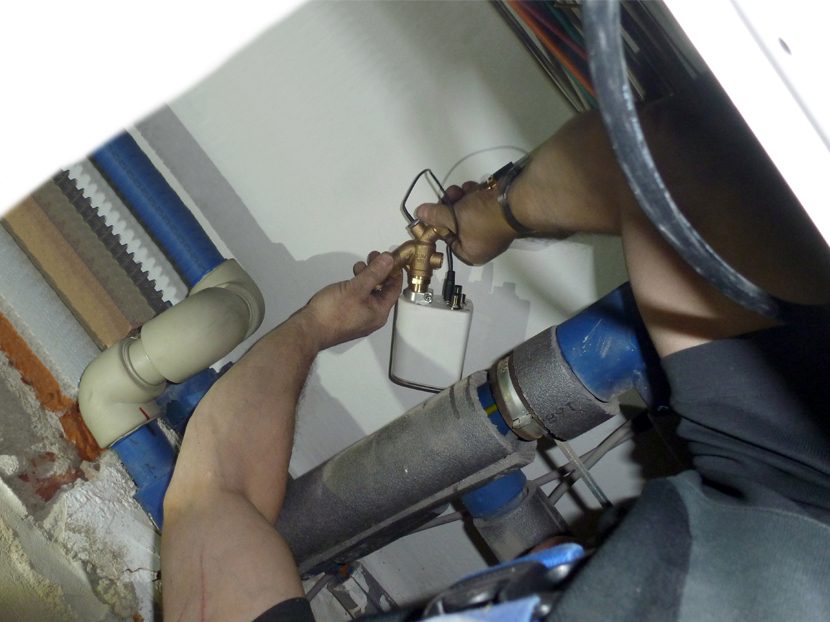GF Piping Systems solution for improving potable water safety in premise plumbing
A system solution for critical facilities

When potable water is set at the wrong temperature and does not circulate enough in the piping, bacteria reproduce particularly fast. The Hycleen Automation System from GF Piping Systems was developed for this type of situation.
A system solution for critical facilities
The existing Erlabrunn clinical center in the Ore Mountains area, 80 miles south of Leipzig in Germany, successfully implemented Hycleen. Nine specialist clinics with approximately 320 beds, a medical supply center and an in-patient hospice are housed in the prominent building complex, which was once a miners' hospital. The water piping, consisting of five different widely-spread pipe systems, wind through the complex.
"Our previous drinking water supply circulated at high temperatures and high pressure," explained Gregor Gunther, technical director at the Erlabrunn clinical center. "Therefore, we were looking for a circulation system with automatic balancing capabilities to guarantee the best hygienic conditions and prevent the formation of germs over the long term."
The management team at Erlabrunn clinic also chose Hycleen partly because they wanted to completely satisfy the official inspection and documentation requirements of the public health authorities. With the new solution, Gunther can quickly and easily access the relevant information when monitoring the premise plumbing system.
Ideal for existing buildings
With its easily installed components, Hycleen is especially well suited to existing buildings.
"Because of all its different pumps, types of pipe and pipelines, the Erlabrunn clinical center was the ideal challenge for implementing this system for the first time," recalled Arnaud Andreolli, product manager of Building Technology at GF Piping Systems Sissach (Switzerland).
After the 72 valves were installed, connected to two system masters and each valves control unit, and automatically adjusted, the system functioned flawlessly. Readjustments were made based on the recorded measurement data. As a result of the installation, any irregularities that may occur, such as low temperatures or defective valves and sensors, can be reported directly to the building operator via the building management system.
Use less water and energy
By circulating the water and creating a permanent hydraulic balance across the hot water circulation system, the system ensures a constant temperature of over 131°F and consequently a virtually sterile environment. This prevents excessive formation of legionella bacteria, for which the growth conditions are between 68°F and 122°F.
Hycleen will only allow as much hot water to circulate in the pipes as necessary and in so doing prevents the loss of heat and energy that would have been necessary to reheat the water. This enables owners and building managers of large facilities with multiple circulation loops to save water and in energy consumption.
Low effort, big impact
Hycleen ensures optimum hygiene standards for potable water in public and private buildings. Continuous monitoring and recording of the temperature is an important prerequisite for reliable assurance of potable water safety.
A unique system master with a control screen and easy-to-operate software manages up to 50 connected valves, sensors, and applications. Hycleen operates under a 4-step principle to minimize risks of bacteria and biofilm growth in potable water systems: prevention, monitoring, intervention, and risk assessment.
Prevention – Targeted preventative measures can make a difference to the safety of potable water. Alongside ensuring the water is at the right temperature, these measures also included maintaining water temperatures outside the ideal range for legionella growth maintaining constant hydraulic balancing of the hot water circulation system and regular flushing to prevent stagnation.
Monitoring – Monitoring refers to taking the existing potable water quality as well as the type of building into consideration. Seamless temperature monitoring is just as important as the storing and documenting of measurements.
Intervention – An intervention should only be carried out as the last resort in ensuring potable water safety. Some methods of intervention include thermal or chemical disinfection.
Risk assessment – Risk assessment is particularly important for larger facilities. The wide range of data that can be obtained using Hycleen is a major help in assessing the condition of the potable water and in recognizing risks. In addition to system risk assessment, Hycleen supports ASHRAE 188 documentation and reporting compliance.
Expanding into new markets
Since the first installation of Hycleen at Erlabrunn clinical center, GF Piping Systems has supplied it to facilities around the globe. Hycleen recently launched in the U.S. at the 2019 NSF Legionella Conference in Los Angeles. There are multiple U.S. projects currently under design and construction utilizing the Hycleen.




